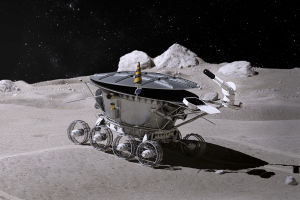
Dear Lykkers, imagine floating in space, observing Earth from a unique vantage point. For astronauts aboard the International Space Station (ISS), this perspective is a part of their daily routine.
But what about their meals? How do they manage to eat 400 kilometers above the surface of the Earth? This article will explore how astronauts are fed in space, taking into account science, technology, and creative solutions.
The Design of Space Diets
Eating in space is not the same as dining on Earth. The absence of gravity presents unique challenges, so astronauts' diets are carefully planned to meet nutritional needs while also adapting to the demands of living in space. Space agencies like NASA collaborate with nutritionists, physicists, and chemists to create meals that are balanced in terms of carbohydrates, proteins, fats, vitamins, and minerals.
One major challenge is the human body’s response to microgravity. Without gravity, astronauts experience changes such as reduced bone density and muscle mass. The cardiovascular system also adapts, with fluids shifting upwards, resulting in a characteristic “moon face.” Additionally, certain nutrients, like iron and vitamin D, are absorbed less efficiently in space. The space diet aims to counteract these effects, providing the necessary nutrients like calcium, vitamin D, and proteins to maintain bone health and muscle mass.
What Do Astronauts Eat in Space?
Astronauts aboard the ISS have access to a surprising variety of meals, although these are designed to be practical and safe in a microgravity environment. Meals are freeze-dried, dehydrated, or packaged in a way that prevents spoilage and ensures long shelf life. Common foods include dried fruits, nuts, freeze-dried soups, pasta, rice, and tortillas, along with energy snacks, cookies, and chocolate.
Drinks are provided in special pouches with straws to prevent spills, and astronauts can enjoy coffee, tea, fruit juices, and water. Some foods, like spicy dishes, are intentionally included to counteract a loss of taste that occurs due to fluid accumulation in the upper respiratory system. Strong flavors, such as horseradish or wasabi, help enhance the astronauts’ sense of taste while in space.
Space Meal Routine
Astronauts typically have three main meals per day, with additional snacks. The caloric intake is approximately 3,000 kcal per day for men and 2,000 kcal for women, with the menu repeating every 7-8 days. Given the duration of space missions, food must be able to withstand long periods of storage. Many space foods are irradiated to prevent spoilage, a process where food is exposed to radiation to eliminate bacteria and mold.
Breakfast, Lunch, and Dinner
A typical breakfast might include powdered milk with cereal, freeze-dried yogurt, and scrambled eggs. For lunch and dinner, astronauts can enjoy freeze-dried pasta with sauce, rice with chicken, vegetable soups, legumes, cheese, and fish with tartar sauce. In addition to regular meals, astronauts are allowed to bring a limited selection of "bonus foods" such as lasagna or tiramisu.
Foods Astronauts Cannot Eat in Space
Certain foods are prohibited due to the risks posed by microgravity. For example, foods that produce crumbs, like bread, are avoided because floating crumbs could damage sensitive equipment. Salt and pepper are not allowed in their traditional forms; instead, they are provided as liquid seasonings to prevent spills.
Cooking and Eating in Space
Cooking in space is quite different from cooking on Earth. There are no stovetops or open flames, and boiling water is not an option due to the absence of gravity. Astronauts use specialized equipment such as microwave heaters and induction stoves to rehydrate freeze-dried food. Each meal is packaged in individual portions to prevent contamination, and condiments are provided in liquid form for easy application.
Eating in space requires some practice, as food can float away if not secured. Astronauts use magnetic or Velcro trays, as well as magnetic utensils, to ensure that their meals stay in place. Even the plates and trays are designed to prevent food from floating away. Despite these challenges, astronauts still manage to enjoy their meals and often share their favorite foods with fellow crew members, creating moments of camaraderie far from Earth.
The Evolution of Space Food
Space food has come a long way since the early days of space exploration. During the first space missions in the 1960s, astronauts had simple meals, often contained in toothpaste-like tubes or in nutrient tablets. These meals were functional but not particularly appetizing.
Over the years, space food has evolved significantly. By the 1970s, freeze-dried meals became common, and astronauts could enjoy more substantial foods like meats, potatoes, and vegetables. Today, astronauts aboard the ISS enjoy a much wider variety of meals, ranging from international dishes to personalized meals.
Advances in food preservation techniques help retain the taste and nutritional value of space food. There are even experiments underway to grow fresh food in space, using methods like hydroponics and aeroponics to grow vegetables and microgreens.
Conclusion: The Future of Space Food
The development of space food is a fascinating intersection of technology, science, and creativity. As astronauts continue to explore space, the need for practical, nutritious, and enjoyable meals will only grow. With each new discovery, the experience of living and working in space becomes just a little bit more comfortable, making it easier for astronauts to focus on their missions while enjoying a good meal.


